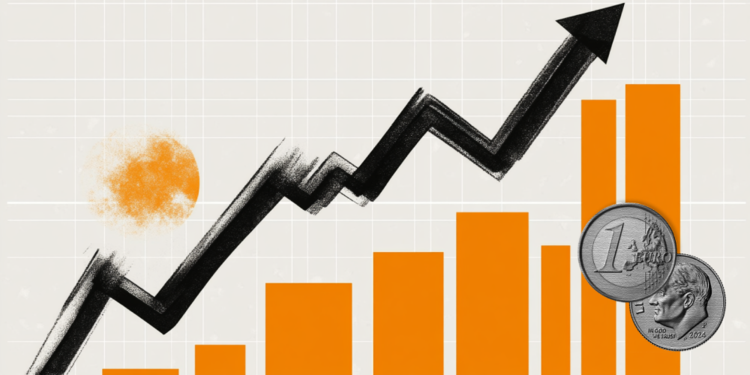- AUD/USD experiences a prolonged decline following the release of Australian labor market numbers during the Asian session.
- The Federal Reserve’s projection of higher interest rates continues to favor the USD.
- Despite recovering some losses, US Treasury yields continue to fall more than 2%.
The Australian Dollar (AUD) fell further against the US Dollar (USD) on Thursday despite strong Australian labor market data reported earlier in the session. The United States appears to be enjoying demand thanks to interest rate reviews, which saw Federal Reserve (Fed) governors forecast fewer rate cuts this year. Furthermore, the Dollar maintained its strength despite the moderate inflation figures reported during the European session.
The Australian economy is showing some signs of weakness, but persistently high inflation is leading the Reserve Bank of Australia to delay cuts, which may limit the downside.
Market drivers: The Australian dollar maintains a selling bias despite positive employment figures
- The Australian Bureau of Statistics (ABS) released employment data showing a drop in Australia’s unemployment rate to 4.0% in May, meeting expectations. This figure marked a slight improvement from the previous rate of 4.1%.
- The change in Australian employment rose to 39,700 in May from 38,500 in April, beating the forecast of 30,000.
- The participation rate increased slightly to 66.8% in May, from 66.7% in April. There was a significant increase in full-time employment, while part-time employment decreased.
- On the US side, the US Bureau of Labor Statistics revealed on Thursday that the Producer Price Index (PPI) of final demand in the US rose 2.2% annually in May, indicating more inflationary pressure lower than expected.
- On the negative side, initial weekly unemployment benefit claims were higher than expected.
Technical Analysis: AUD/USD Sellers Gain Momentum, Positive Outlook Remains
The RSI remains above 50 but points lower, suggesting that the bullish momentum could be losing steam. Meanwhile, the MACD is showing steady red bars indicating stable selling pressure.
However, the short-term outlook remains positive as the pair maintains its position above the 20-day SMA at 0.6640. If lost, the 100-day and 200-day SMAs are offered as barriers around the 0.6560 area.
The central banks
Central banks have a key mandate to ensure price stability in a country or region. Economies constantly face inflation or deflation when the prices of certain goods and services fluctuate. A constant rise in the prices of the same goods means inflation, a constant fall in the prices of the same goods means deflation. It is the central bank’s job to keep demand in line by adjusting its interest rate. For the largest central banks, such as the US Federal Reserve (Fed), the European Central Bank (ECB) or the Bank of England (BoE), the mandate is to keep inflation close to 2%.
A central bank has an important tool to raise or lower inflation: modify its reference interest rate. At pre-communicated times, the central bank will issue a statement with its reference interest rate and give additional reasons why it maintains or modifies it (cuts or raises it). Local banks will adjust their savings and loan rates accordingly, which in turn will make it harder or easier for citizens to make a profit on their savings or for companies to borrow and invest in their businesses. When the central bank substantially raises interest rates, we speak of monetary tightening. When you reduce your reference rate, it is called monetary easing.
A central bank is usually politically independent. Members of the central bank’s policy council go through a series of panels and hearings before being appointed to a position on the policy council. Each member of that council usually has a certain conviction about how the central bank should control inflation and the subsequent monetary policy. Members who want a very loose monetary policy, with low rates and cheap loans, to substantially boost the economy, while settling for inflation slightly above 2%, are called “doves.” Members who prefer higher rates to reward savings and want to control inflation at all times are called “hawks” and will not rest until inflation is at 2% or just below.
Typically, there is a chair who leads each meeting, has to create a consensus among the hawks or doves, and has the final say when votes need to be divided to avoid a 50-50 tie on whether to adjust current policy. The president will give speeches, which can often be followed live, in which he will communicate the current monetary stance and outlook. A central bank will try to push its monetary policy without causing violent swings in rates, stocks or its currency. All central bank members will channel their stance toward markets ahead of a monetary policy meeting. A few days before a monetary policy meeting is held and until the new policy has been communicated, members are prohibited from speaking publicly. This is what is called the silent period.
Source: Fx Street
I am Joshua Winder, a senior-level journalist and editor at World Stock Market. I specialize in covering news related to the stock market and economic trends. With more than 8 years of experience in this field, I have become an expert in financial reporting.







